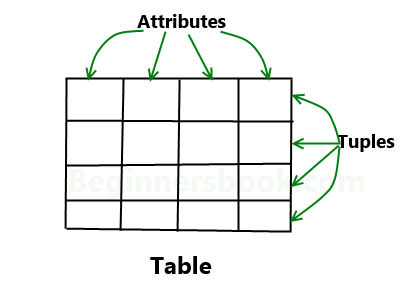You may hear this term often when dealing with Relational Database Management Systems (RDBMS). In RDBMS, a table organizes data in rows and columns. The columns are known as attributes whereas the rows are known as records.

Example: A school maintains the data of students in a table named “student”. Suppose the data they store in table is student id, student name & student age. To do this they have had three columns in the table: student_id, student_age, student_name. The table looks like this:
| student_id | student_age | student_name |
| 101 | 12 | Jon |
| 102 | 13 | Arya |
| 103 | 12 | Sansa |
Here student_id, student_age and student_name are the attributes.
Leave a Reply